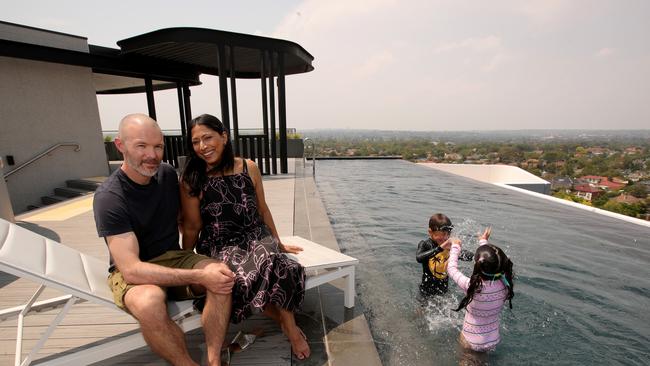Parks the new priority for home buyers
Up to 60 per cent of Australians would sacrifice a big backyard to be closer to neighbours and parks.

Up to 60 per cent of Australians would sacrifice a big backyard to be closer to neighbours and parks, a national snapshot of home buyers’ priorities shows.
Research by the Stockland group, one of the big-three developers of masterplanned housing estates, underlines the shift away from the traditional backyard that has made the quarter-acre block of 1000sq m something of a curiosity in modern suburbia.
The company’s 2020 property survey found three in five would forego a large backyard for a smaller home with less outdoor space if that meant they were more connected to neighbours, and closer to parks and green spaces.
General manager of residential sales Stephanie Vanin said this was a long-term trend, with better-informed buyers expecting a high level of community amenity. “The way people are choosing to live and what we are seeing in customers who are looking to buy within our residential communities is they are putting a lot more emphasis and value on the public parks and spaces,” she said.
The Australian is running the ruler over the great Aussie backyard in a week-long series exploring how the downsizing of this icon of national life has affected families and communities.
Soaring capital city property prices and time-poor homeowners mean the median lot size has shrunk to 441.2sq m, according to the Housing Industry Association, while blocks as small as 80sq m have hit the market.
The hidden costs can be counted in children’s physical and mental health, the advent of urban “heat islands”, the loss of native animal habitat and even the skill levels of athletes, experts warn.
Apartment living has surged, increasing from just 12 per cent of new home stock a decade ago to 30 per cent.
For the Vanston family of Melbourne, buying a unit was the only way to gain a foothold on the property ladder.
As Ms Vanston, 42, explained, they had been in a rented townhouse in Melbourne’s southeast and could not save enough to keep pace with the increase in detached home prices.
She and husband Luke, 39, bought a two-bedroom apartment off the plan to live in with children, Zeke, 7, and Harper, 5. “We see it as a really good option as a stepping stone towards owning a home,” Ms Vanston said.
The Stockland survey found buyers were demanding more features in the community around them, as well as in the home. The wishlist extended to more walking paths and fewer roads, community gardens and recreation spaces.
Nearly a third of those surveyed said they would be prepared to move interstate, especially people in Sydney confronting the NSW capital’s supercharged property market. Buying the home they wanted for less was cited by 32 per cent of respondents as a reason to relocate.
The national executive director of the Urban Development Institute of Australia, Connie Kirk, said changes in lifestyle had recast the home from “a castle to a retreat”, with people prioritising house size over the size of the yard.
“People are generally more stressed, they’re working longer hours in the morning and at the latter end of the day. When they actually are at home … they just want downtime,” Ms Kirk said.
“So they actually don’t have that time to then utilise an outdoor space.
“They are choosing when they want to be with others.”
The Vanstons have been getting used to apartment living, which means the kids have to share a bedroom — “a little bit of an adjustment,” Ms Vanston said.
“We knew our neighbours quite well at our last house and the kids loved playing with each other. They’d talk through the fence and would be at our house in two minutes,” she said.
“On the opposite side of that, the pool on the rooftop has become a great way for the kids to meet other families.
“We are planning to organise some play dates with them in the building and eventually they can just go between the floors to meet their friends.”



To join the conversation, please log in. Don't have an account? Register
Join the conversation, you are commenting as Logout